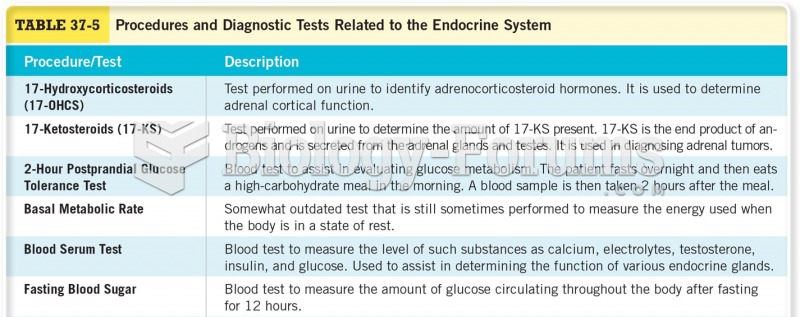Answer to Question 1
The combination of being overweight, nightly urination, HTN, and increased appetite along with a family history of gestational diabetes are clues that there may be an increased risk for diabetes.
Weight status, HTN, and family history are all risk factors for CVD, so performing a lipid panel helps to screen for additional risk factors that can be controlled early on.
Altered lab results:
Total Cholesterol >170 mg/dL
LDL Cholesterol >110 mg/dL
HDL Cholesterol 35 mg/dL
Triglycerides 150 mg/dL
Glucose 60-100 mg/dL
Cholesterol and triglycerides are WNL.
LDL and HDL levels are close to being outside of the acceptable range.
The glucose level is just outside normal range, but she just ate breakfast two hours before she came in. To be sure, a fasting glucose would be prudent.
Using this text laboratory values as reference. Substantial variation exists in the ranges quoted as normal and these may vary depending on the assay used by different laboratories.
Answer to Question 2
According to his BMI, pt. should aim for weight reduction. According to calculated energy needs, pt. should follow 1900-kcal diet.
- To start, approximately 50 of energy should come from carbohydrates
- 1900 kcal x 0.50 = 950 kcal from carbs / 4 kcal/g = 237.5 g or 238 g carbohydrates
- Using ICR of 15 g carbs to 1 unit of insulin, 238 g carbs / 15g = 16 carb choices for the day
Using his diet history as a reference, Mitch should aim to eat consistent amounts of carbohydrates throughout the day.
- 4-5 carbs for breakfast: 1 bagel, or small bagel with cream cheese (light), coffee w/ half-and-half (free)
- 1-2 carbs for a snack: piece of fruit, small- to medium-sized banana or apple
- 5-6 carbs for lunch: 12 subway sandwich, turkey with veggies, light on sauce if any (no chips)
- 5-6 carbs for dinner: 1 cup of rice, salad, grilled chicken, and 8 oz of fruit juice







